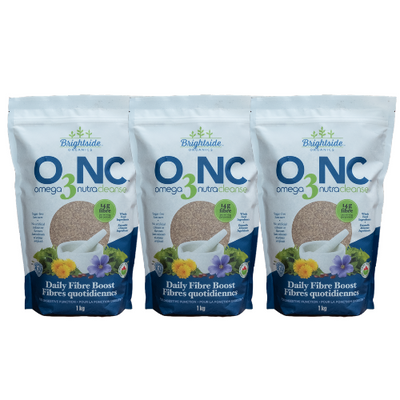The Difference between Soluble and Insoluble Fibre
Let’s face it: your body needs a variety of nutrients, fats, oils, proteins, carbohydrates, fibre and nutrients. The type of food we put into our body impacts the way we feel, and most importantly, the way it functions. Fibre is a key player in our health. It helps to promote not only gut health, but is also a factor in reducing the risk of developing a variety of chronic diseases.
Fibre comes from plant-based foods and pushes through the digestive system, helping to absorb water and regulate your bowel moments. There are two types of fibre that play a role in our digestive health: soluble and insoluble—and both play an important role in cleaning your digestive tract from the inside out.
Soluble Fibre
Soluble fibre attracts water and transforms it into a gel-like lining during the digestion process. It binds with fatty acids and prolongs the stomach-emptying stage that helps you stay full longer, slowing down the digestion process.
Omega3NutraCleanse® is great to incorporate into your daily diet, because it’s incredibly high in this very important nutrient. The psyllium in Omega3NutraCleanse® helps soak up the water in your gut, and improves the regularity of your bowels. It also can be helpful when constipated, as it softens your stool, and it helps to lower your risk of heart disease.
Soluble fibre can also be found in oat bran, barley, nuts, seed, legumes, and beans. Adding a scoop of Omega3NutraCleanse® to any of these foods when cooking gives you an extra boost of benefits.
Insoluble Fibre
The other type of fibre is insoluble, which helps food pass quickly through your intestines by adding more bulk. It also controls the pH level in your body. Insoluble fibre can be found in a variety of foods, such as wheat bran, whole grains, vegetables, soy, fruits.
It‘s important to have a balance of both types of fibre in your diet to promote regularity and reap the rewards of the other health benefits discussed above.
Fibre comes from plant-based foods and pushes through the digestive system, helping to absorb water and regulate your bowel moments. There are two types of fibre that play a role in our digestive health: soluble and insoluble—and both play an important role in cleaning your digestive tract from the inside out.
Soluble Fibre
Soluble fibre attracts water and transforms it into a gel-like lining during the digestion process. It binds with fatty acids and prolongs the stomach-emptying stage that helps you stay full longer, slowing down the digestion process.
Omega3NutraCleanse® is great to incorporate into your daily diet, because it’s incredibly high in this very important nutrient. The psyllium in Omega3NutraCleanse® helps soak up the water in your gut, and improves the regularity of your bowels. It also can be helpful when constipated, as it softens your stool, and it helps to lower your risk of heart disease.
Soluble fibre can also be found in oat bran, barley, nuts, seed, legumes, and beans. Adding a scoop of Omega3NutraCleanse® to any of these foods when cooking gives you an extra boost of benefits.
Insoluble Fibre
The other type of fibre is insoluble, which helps food pass quickly through your intestines by adding more bulk. It also controls the pH level in your body. Insoluble fibre can be found in a variety of foods, such as wheat bran, whole grains, vegetables, soy, fruits.
It‘s important to have a balance of both types of fibre in your diet to promote regularity and reap the rewards of the other health benefits discussed above.


